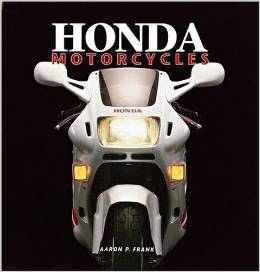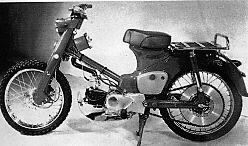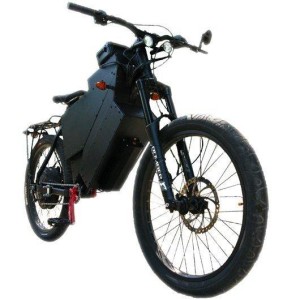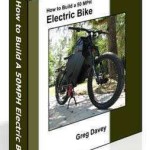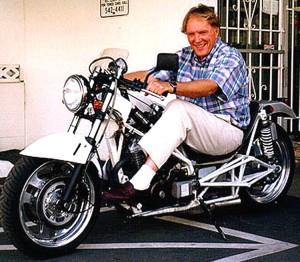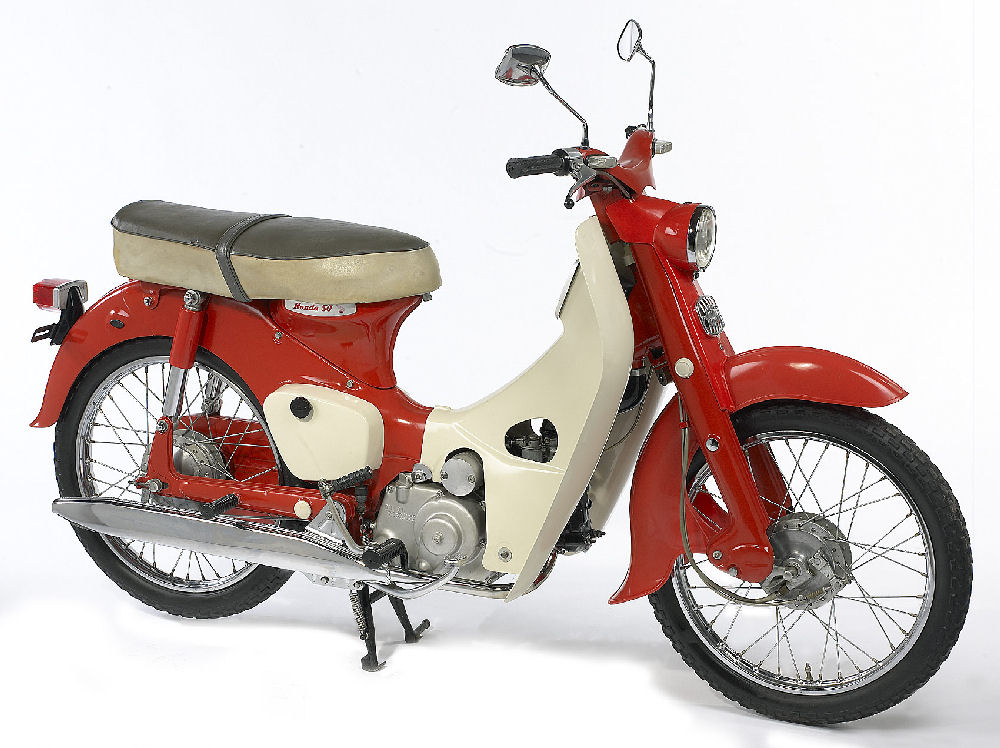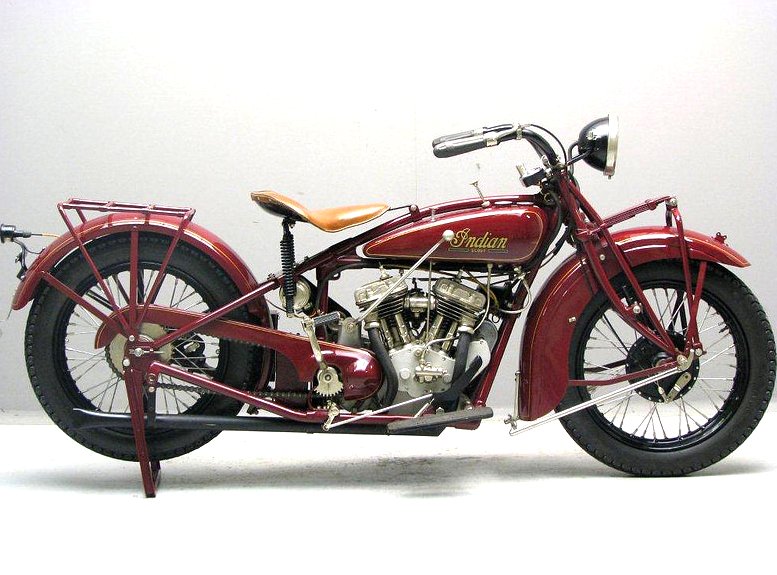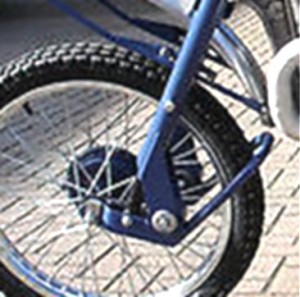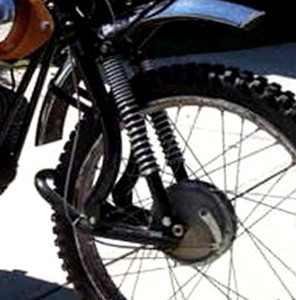By Damon Marturion
The story of the origin of the ATV starts at Boise Idaho in 1960 where a local motorcycle dealer by the name of Herb Uhl redesigned a small 50cc Honda Cub. It had been built mainly for city transportation.
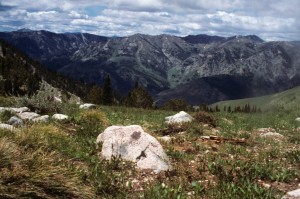 Herb redesigned it for use on mountain trails and for use on the farms and ranches that covered Idaho’s wide open spaces. As soon as he started converting Them they sold like hot cakes.
Herb redesigned it for use on mountain trails and for use on the farms and ranches that covered Idaho’s wide open spaces. As soon as he started converting Them they sold like hot cakes.
Surrounding the Boise area were thousands of acres of nearly road-less mountains and desert with very few fences. In those days you could climb on your motorcycle in town at your house and within a few minutes you could be on top of one of the foothills of the mountains next to Boise.
From there you could look out over the entire valley clear to the Owyhee Mountains to the west. Seldom did anyone in the area ride their motorcycles on the highway more than a few miles from town.
Most of the bikes were stripped down to short basic fenders & small lights and were equipped with knobby tires to get traction in the dirt. You could call them the beginning of the modern adventure bike.
 That’s what it was like in 1950 when Herb Uhl moved to Idaho from Florida. Herb was a mechanic who’d started his career in a motorcycle shop several years before so he really liked motorcycles.
That’s what it was like in 1950 when Herb Uhl moved to Idaho from Florida. Herb was a mechanic who’d started his career in a motorcycle shop several years before so he really liked motorcycles.
In Boise Herb was working in an automotive shop on automatic transmissions. There were three motorcycle shops in town at that time; Harley Davidson (Don Gamble) with a couple dirt riders, Triumph (Buzz Chaney) with a lot of fame as a racer with most of the dirt riders, and B.S.A. (Harlan Wood) just back from the service, he was the new dealer in town with a growing group of dirt riders.
Herb used to wander into the shops from time to time but no one had the kind of lightweight bike he wanted so he spent most of his spare time researching the magazines looking for his idea of a proper dirt bike.
He was working at the transmission shop one day when a customer traded in a nearly new All State motorcycle for some transmission work.
Herb’s wife Rosemary was riding the motorcycle one day when another lady in a car turned in front of her. Herb repaired the small damage To the bike and used most of the insurance money to go into the motorcycle business. That was early in 1955.
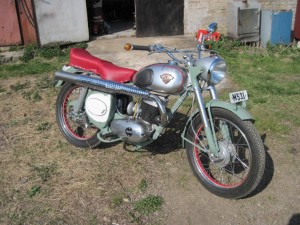 The brand he chose to handle was Maico. It was built by a German company and was better engineered than the English & American bikes that were available.
The brand he chose to handle was Maico. It was built by a German company and was better engineered than the English & American bikes that were available.
The first bikes presented by the US distributor were some surplus units that had been ordered by the Sweedish distributor who ran low on money before they could be delivered. They were perfect for Idaho dirt riders. The machines had been specially built for International off-road competition. All were light weight 250cc high performance 2-stroke machines with knobby tires, special tool kits (because in that type event the rider is required to do all their own maintenance), and even an air bottle (for refilling tires), and a four gallon fuel tank (handy on long trail rides).
It wasn’t long ‘til Nick Gray, the importer, put 10 bikes at a time with Herb on consignment, so the business moved right along. In 1959 Herb saw info in a cycle magazine about a motorcycle company called Honda who would ship bikes from Japan, so he ordered two of the off-road competition models shown in the magazine article.
Herb thought they would probably be pretty crude because the news in those days fed everyone a lot of anti-Japan propaganda. The bikes arrived in a couple of months and they were beautiful. A reorder was put in but they would only sell him production highway bikes and the factory couldn’t understand why he didn’t want them.
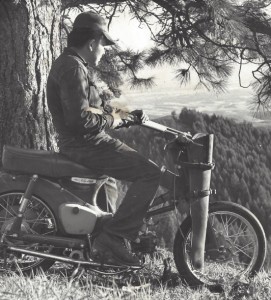 By 1960 Honda was opening a US branch on Sepulveda Boulevard in Los Angeles and Herb was the first US dealer to visit them.
By 1960 Honda was opening a US branch on Sepulveda Boulevard in Los Angeles and Herb was the first US dealer to visit them.
He signed up for a regular dealership and got a few of their regular bikes to see if they would sell in Boise Idaho.
The people from Japan couldn’t fathom why Herb wanted, what to them were competition-only machines instead of bikes the public should want.
There was Herb with a bunch of bikes in stock that were designed for the city, and not for the rough country around Boise Idaho.
In the 1960s about the only way to get to any one of the numerous high mountain lakes for instance, was horses and pack animals or walking. Back yard tinkerers were putting lawn mower engines on a little rectangular framework with two small wheels, like a tiny crude scooter without suspension or shocks and a board with upholstery for a seat to try to make mountain travel a little easier.
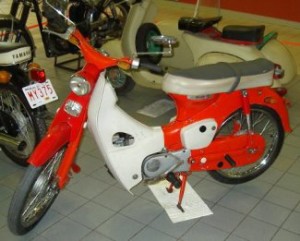 Herb started looking at the little 50cc Honda Cub, model CA-100, from a different point of view. It had all the good stuff it takes to build an excellent all-terrain-vehicle. It was lightweight (about 140 lbs.) with 17 inch wheels like a small motorcycle for stability and the gas tank was under the seat like a scooter.
Herb started looking at the little 50cc Honda Cub, model CA-100, from a different point of view. It had all the good stuff it takes to build an excellent all-terrain-vehicle. It was lightweight (about 140 lbs.) with 17 inch wheels like a small motorcycle for stability and the gas tank was under the seat like a scooter.
It had a great Engine a 3 speed transmission with an automatic clutch so no skill was required to ride it. There was a real seat and it sat low enough that almost everyone could touch the ground. The suspension rivaled many large motorcycles of the day with shocks and swing arm suspension both front and rear and finally it went a long way with a tank full of gas.
The first thing Herb did was order in knobby tires. While he awaited their arrival he had a large 72 tooth rear sprocket made that slipped right over and bolted to the original road sprocket to slow it down enough for trail, farm and ranch use.
Next, things were slimmed down so it would easily go between trees and rocks. A skid plate was built to protect the engine and a less bulky muffler was used. It worked really well all over the mountains around Boise.
Herb had converted and sold a couple of hundred machines when Jack McCormick national sales manager for American Honda noticed that Herb was selling more Honda Cubs than all the dealers in Los Angeles combined.
The story of American Honda’s rise to prominence is highlighted in Aaron P. Frank’s book, Honda Motorcycles as told by Jack McCormack.
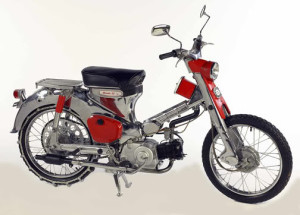 So there you have it the first ATVs had two wheels and were designed in the small town of Boise Idaho by Herb Uhl.
So there you have it the first ATVs had two wheels and were designed in the small town of Boise Idaho by Herb Uhl.
As soon as the other motorcycle manufacturers in Japan saw what Honda was doing they each came out with their own version of the two-wheeled ATV.
We’re all led to believe one person can’t make a difference.
Herb’s ability to think a little bit outside the box caused several hundred thousand practical fun machines to be sold all over the world. All this activity helped the Honda Cub become the largest selling vehicle ever made (over 26 million sold). A true Swiss Army knife of motorcycles.
A few years later came the 3-wheeled ATV followed closely by the 4-wheelers leading directly to today’s side by sides.
Most campers and hunters have an ATV or two, and now you see one model or another, and sometimes several on almost every farm and ranch all over the world.
